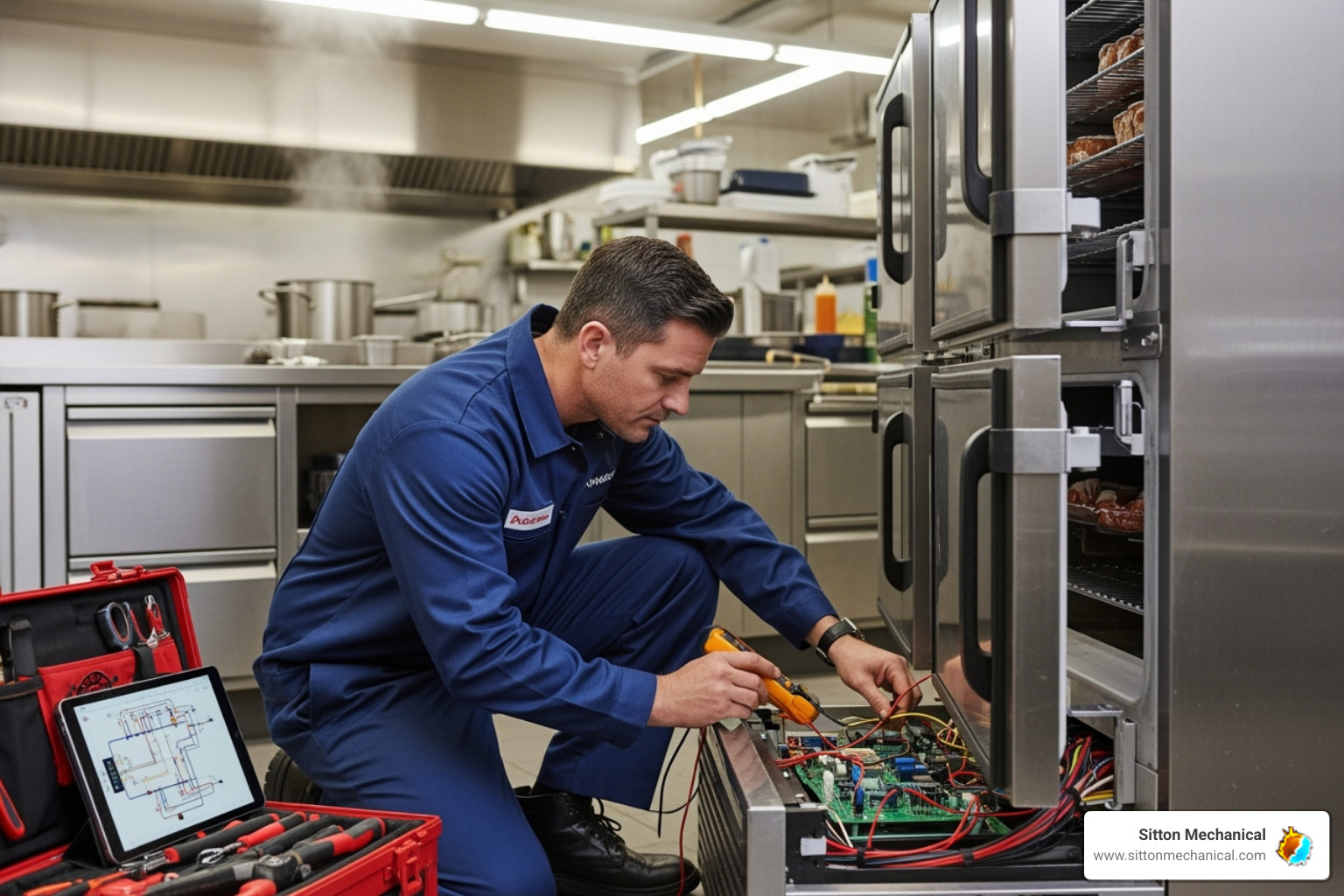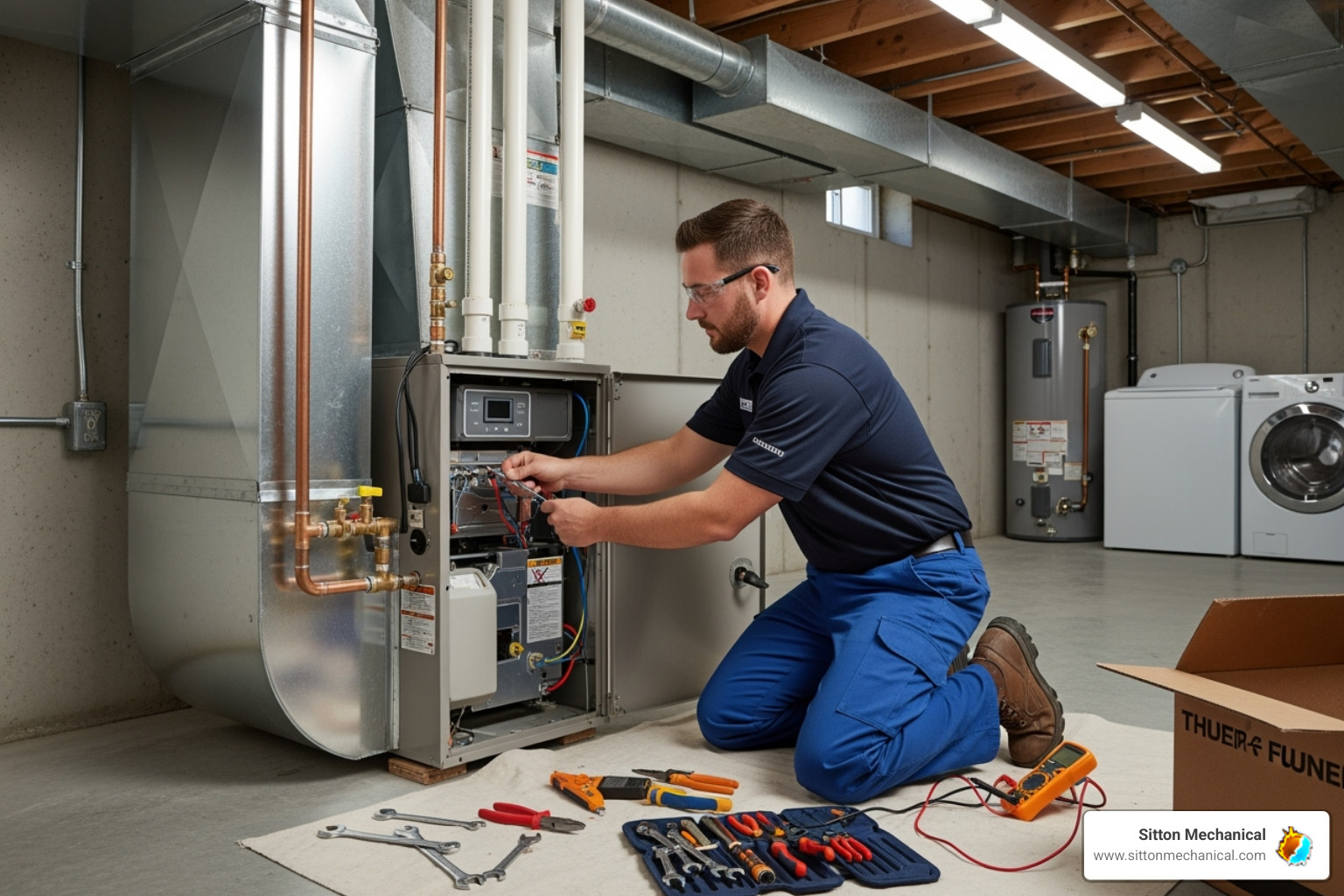Geothermal heating and cooling systems offer an efficient and environmentally friendly way to maintain comfortable temperatures in your home. By harnessing the stable temperatures found underground, these systems provide consistent heating and cooling throughout the year. This method is not only effective but also reduces energy consumption, making it a great choice for homeowners seeking sustainable solutions.
The Basics of Geothermal Heating and Cooling
Geothermal heating and cooling systems work by utilizing the stable temperatures beneath the Earth's surface. This system relies on a geothermal heat pump to transfer heat between your home and the ground. During the winter, the system extracts heat from the ground and transfers it inside your home. In the summer, the process is reversed, as the system removes heat from your home and disperses it into the cooler ground.
This method of temperature regulation is far more efficient than traditional systems, which rely on fluctuating outdoor air temperatures. Geothermal systems can provide consistent heating and cooling, making them an attractive option for maintaining indoor comfort. Because the temperature underground remains relatively constant, the system requires less energy to operate, which can lead to lower utility bills.
Another key aspect of geothermal heating and cooling is its environmental benefit. These systems produce fewer greenhouse gas emissions compared to conventional HVAC systems. This makes geothermal heating and cooling not only a cost-effective solution but also a more sustainable choice for homeowners looking to reduce their carbon footprint.
Key Components of a Geothermal System
A geothermal system is composed of several key components that work together to provide efficient heating and cooling. Understanding these components can help homeowners appreciate the complexity and effectiveness of geothermal technology.
1. Geothermal Heat Pump: The core of the geothermal system, this pump is responsible for transferring heat between the house and the ground. It includes a compressor, heat exchanger, and a fan to distribute air throughout the home.
2. Ground Loop System: This is a series of pipes buried underground, either horizontally or vertically. The loops are filled with a water and antifreeze solution that absorbs and transfers heat. There are three main types of ground loop systems: closed-loop, open-loop, and pond/lake loop.
3. Distribution System: The geothermal heat pump connects to the home’s existing ductwork or radiant heating system. This distribution system delivers warm or cool air throughout the house, maintaining a comfortable indoor environment.
Each of these components plays a crucial role in ensuring the geothermal system operates efficiently. When installed and maintained correctly by our professionals, these systems can provide reliable and long-lasting heating and cooling solutions for residential homes.
How the Installation Process Works
Installing a geothermal system is a detailed process that requires the expertise of our trained professionals. Here is a step-by-step overview of how the installation is carried out:
1. Site Evaluation: Our professionals start with a thorough assessment of your property. This includes soil testing, checking the landscape, and identifying the best location for the ground loop system.
2. System Design: Based on the evaluation, our technicians design a geothermal system tailored to your home’s specific needs. This involves selecting the right type of ground loop system and the appropriate size of the geothermal heat pump.
3. Ground Loop Installation: The next step involves drilling and installing the ground loops. This may involve horizontal or vertical drilling, depending on the space and soil conditions. Once the loops are in place, they are filled with a water-antifreeze solution for heat transfer.
4. Heat Pump Installation: Our technicians then bring in the geothermal heat pump, which is installed inside your home and connected to the ground loops.
5. System Integration: The heat pump is integrated with your home’s existing ductwork or radiant heating system. This ensures that the geothermal system can effectively distribute heated or cooled air throughout your home.
6. Final Calibration and Testing: Our professionals thoroughly test and calibrate the system to ensure optimal performance. They check for any inefficiencies and fine-tune the system for reliable and efficient operation.
Each of these steps is meticulously executed to ensure your geothermal system operates effectively, providing consistent comfort throughout the year.
Benefits of a Geothermal System for Residential Homes
There are numerous benefits to installing a geothermal system in residential homes. Understanding these advantages can help homeowners make informed decisions about their HVAC options.
1. Energy Efficiency: Geothermal systems are incredibly energy-efficient. They use the stable temperatures underground to provide heating and cooling, reducing the energy required compared to traditional HVAC systems.
2. Cost Savings: Due to their high efficiency, geothermal systems can lead to significant savings on utility bills. The reduced energy consumption translates to lower monthly costs for heating and cooling.
3. Environmental Friendliness: Geothermal systems produce fewer greenhouse gas emissions, making them an eco-friendly option. Homeowners can reduce their carbon footprint significantly by opting for geothermal heating and cooling.
4. Durability and Longevity: With fewer moving parts and sheltered installations, geothermal systems often require less maintenance and have longer lifespans compared to conventional HVAC systems.
5. Consistent Comfort: Geothermal systems offer stable and reliable indoor temperatures throughout the year. Regardless of the weather outside, your home remains comfortable.
6. Quiet Operation: Geothermal systems typically operate more quietly than traditional HVAC systems, providing a more peaceful living environment.
These benefits make geothermal systems an excellent option for homeowners looking for a sustainable, long-term solution for their heating and cooling needs.
Conclusion
Geothermal heating and cooling systems offer a myriad of benefits, making them an attractive choice for homeowners seeking efficient, environmentally friendly, and reliable options for temperature control. By utilizing the consistent temperatures underground, these systems provide stable heating and cooling year-round, while also reducing energy costs and environmental impact. The intricate installation process and key components ensure that each system is tailored to meet the specific needs of the home, guaranteeing optimal performance.
At Sitton Mechanical, we take pride in our expertise in geothermal heat pump installations, ensuring each phase of the process is handled with precision and care. Our trained professionals are committed to delivering high-quality HVAC services, ensuring your geothermal heating and cooling in Perkins operates efficiently for years to come. If you’re interested in learning more about how a geothermal system can benefit your home or need expert assistance with installation, maintenance, or repair, contact us today. Let us help you achieve a more comfortable and energy-efficient home.
Ready to Transform Your Home?














